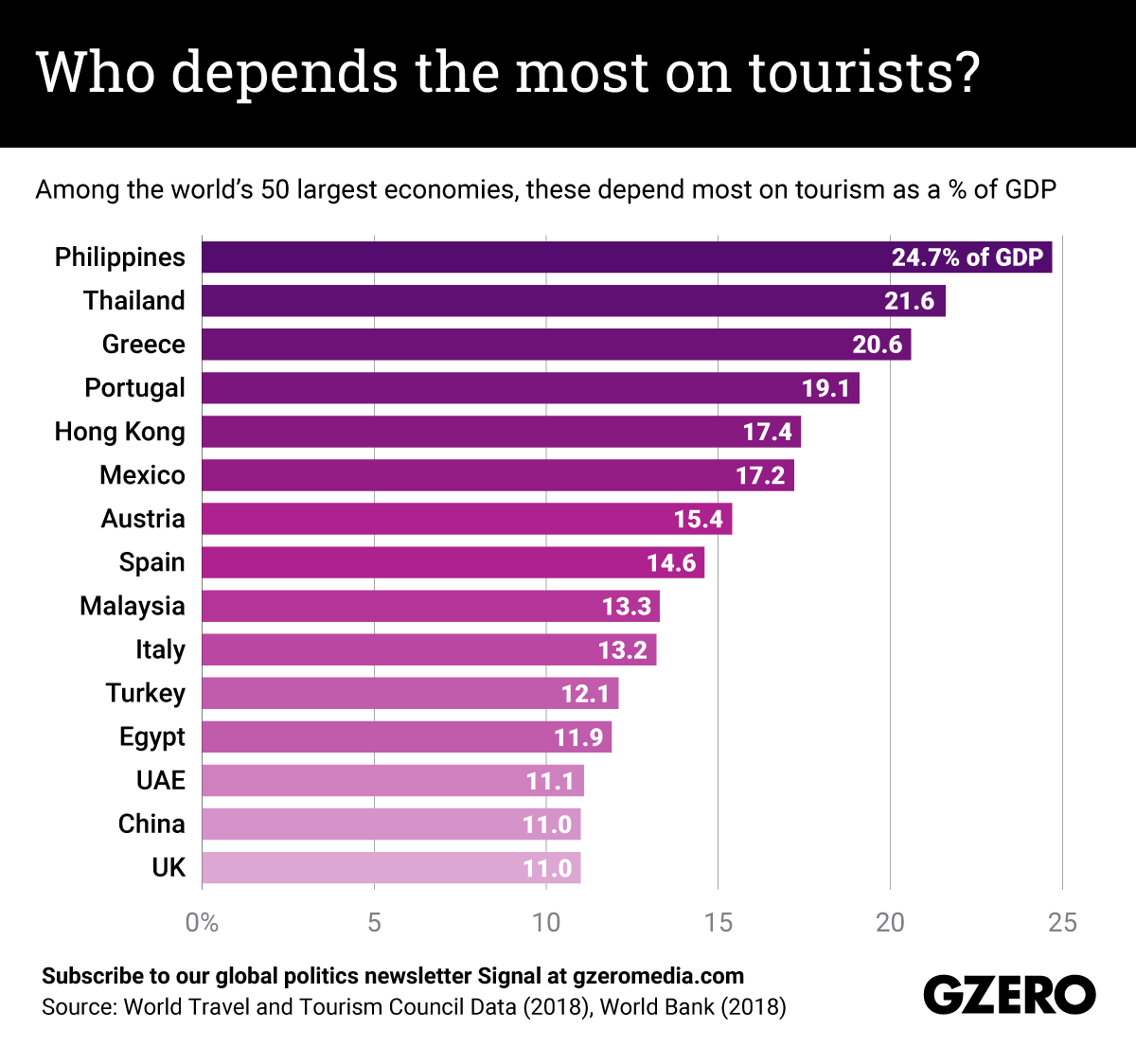May 14, 2020
Few sectors of the global economy are immune from pandemic-induced economic pain right now, but some find comfort in the fact they will bounce-back in the near or medium-term. The travel business, which has been brought to a standstill as billions of people have been forced to stay home, may not be one of those lucky industries. As social distancing will likely remain a reality until a COVID-19 vaccine is made available – a process that could still take 12-18 months – people's appetite to take foreign holidays is unlikely to bounce back in a big way. And many countries will keep their borders closed to non-residents for months to come, as fears of contagion persist. This is a huge blow for countries that rely on tourism to pump cash into their economies. Travel contributed a whopping $8.8 trillion to the global economy in 2018 and was responsible for 10.4 percent of all economic activity around the world. So, which large economies stand to lose the most from the tourism downturn? Take a look.
From Your Site Articles
More For You
Can we still trust Wikipedia in an age of polarization and AI? Cofounder Jimmy Wales joins Ian Bremmer to explain why millions still do.
Can we still trust Wikipedia in an age of polarization and AI? Cofounder Jimmy Wales joins Ian Bremmer to explain why millions still do.
We can't really agree on anything, except for Wikipedia.
Most Popular
Think you know what's going on around the world? Here's your chance to prove it.
Women work in the plastic container assembly area inside the El Oso shoe polish factory, located in Mexico City, Mexico, in its new facilities, after officers from the Secretariat of Citizen Security and staff from the Benito Juarez mayor's office arbitrarily and violently remove their supplies, raw materials, machinery, and work tools on January 17 of this year following a coordinated operation stemming from a private dispute. On August 27, 2025.
Photo by Gerardo Vieyra/NurPhoto
50: Mexico’s President Claudia Sheinbaum is taking a page out of US President Donald Trump’s book, implementing up to a 50% tariff on more than 1,400 products in a bid to boost domestic production.
© 2025 GZERO Media. All Rights Reserved | A Eurasia Group media company.
